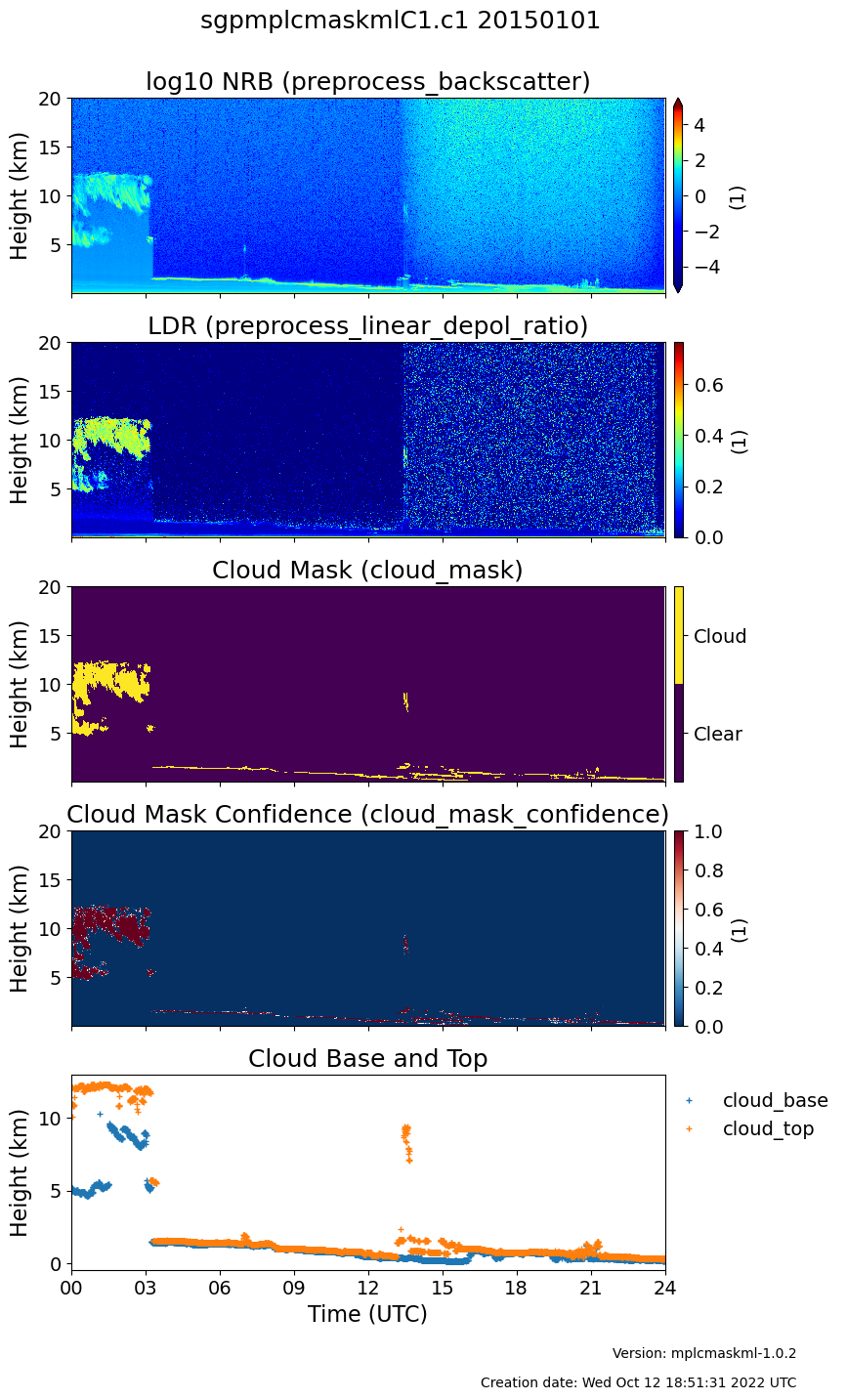Micropulse Lidar Cloud Mask Machine Learning VAP Now In Production
Published: 24 February 2023

The Micropulse Lidar Cloud Mask Machine Learning value-added product (MPLCMASKML VAP) has moved from evaluation to production. This transition increases the data availability for active Atmospheric Radiation Measurement (ARM) user facility sites operating fast-switching polarized micropulse lidars from the beginning of instrument operations at each site to the present day.
In addition, production data are provided for all ARM mobile deployments included in the initial evaluation release.
MPLCMASKML uses a machine learning model that can produce pixel-to-pixel predictions of clouds in lidar images (Cromwell and Flynn 2019). The VAP gives users the predictions from the model, the cloud mask generated from the prediction output, the number of cloud layers, and the cloud layer boundaries. This ARM data announcement describes the differences between MPLCMASKML and the original MPLCMASK product.
MPLCMASKML production data are available for the following ARM sites and date ranges:
- the Southern Great Plains (SGP) Central Facility near Lamont, Oklahoma, from July 10, 2010, to February 17, 2023
- the Eastern North Atlantic (ENA) atmospheric observatory from October 3, 2013, to February 10, 2023
- the North Slope of Alaska (NSA) atmospheric observatory at Utqiaġvik (formerly Barrow) from October 9, 2010, to February 19, 2023
- Oliktok Point, Alaska, from September 13, 2013, to June 13, 2021
- McMurdo Station, Antarctica, from December 1, 2015, to January 2, 2017, during the ARM West Antarctic Radiation Experiment (AWARE)
- Córdoba, Argentina, from September 27, 2018, to April 30, 2019, during the Cloud, Aerosol, and Complex Terrain Interactions (CACTI)
The MPLCMASKML team plans to have data for the SGP, ENA, and NSA caught up to the present day and automatically running daily by mid-March.
Future data will come from the 2019–2020 Multidisciplinary Drifting Observatory for the Study of Arctic Climate (MOSAiC) expedition. Eventually, all available ARM fast-switching polarized micropulse lidar data will be processed with MPLCMASKML.
More information about MPLCMASKML is available on the VAP web page.
Access the data in the ARM Data Center. (Go here to create an account to download the data.)
To share your experience using the data or to ask questions, contact ARM translator Damao Zhang, assistant translator Donna Flynn, or VAP developer Erol Cromwell.
To cite the MPLCMASKML data, please use doi:10.5439/1637940.
Reference: Cromwell E and D Flynn. 2019. “Lidar Cloud Detection With Fully Convolutional Networks.” In 2019 IEEE Winter Conference on Applications of Computer Vision (WACV), 619-627, doi:10.1109/WACV.2019.00071.
Keep up with the Atmospheric Observer
Updates on ARM news, events, and opportunities delivered to your inbox
ARM User Profile
ARM welcomes users from all institutions and nations. A free ARM user account is needed to access ARM data.


















